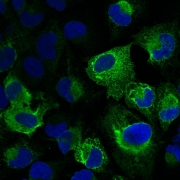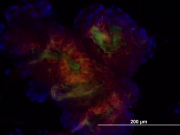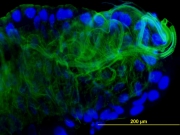Pokyny pro PhD studenty KBE

Katedra biologie ekosystémů
All pending graduate students (including those on interruption/parental leave, as their original rules may have been changed meanwhile), as well as their supervisors (including those external and potential) should be aware of all the milestones implying by the current Dean’s provision No. 62 (in Czech). Here is an overview of important milestones and duties of PhD students enrolled in both doctoral programmes, i.e. Ecosystem Biology or Hydrobiology.
- “No later than two months after the commencement of study, the student is obliged to submit, via the Department of Student Affairs, a proposed ‘Doctoral Study Plan’ to the specialist board of the doctoral study programme …” – We strongly recommend being faster, in particular during winter semesters, when the approval process used to be delayed due to the Christmas season.
- “No later than in the second semester of study, enroll for the subject ‘Literature review’ (KBE/806) … it is recommended to submit the review at least one month before the end of the second semester…” (see also Requirements of "Literature review") – However, we strongly recommend being faster, otherwise you risk a penalty, i.e. reduced stipend since your second year (i.e. from the 13th month until its approval).
- “Submit an annual report on the progress … every year by 31 October” – completely and carefully filled!
- Be aware of all your duties, such as conference presentations (KBE/907), study stays abroad (FBI/801–803), annual presentations at doctoral conference/seminar (KBE/805), teaching activities, etc.
- To receive an assessment in STAG from:
- KBE/907 (the presentation at an international conference in foreign language) – student has to send a confirmation of his presentation (i.e. a scan from the conference abstract book) to the chair of the specialist board (Jana Jersáková or Jaroslav Vrba) of either doctoral study programme.
- KBE/800 (Doctor´s Thesis, Practical Part) – the student’s supervisor has to send a confirmative e-mail to either chair of the specialist board of either doctoral study programme or to the secretary of our department (Jana Vrbová) with his/her approval to grant a student with the assessment.
- Fulfil most of prerequisites, such as elective courses, English exams (OJZ/940, OJZ/950) followed by state exam (FBI/D1), timely within four years = until the end of your regular study.
- Provide proper author’s affiliation (FSc USB) of yourself on all publications intended for your dissertation thesis – otherwise the papers cannot be included into your thesis!
- Do not intentionally postpone submitting your dissertation thesis beyond the standard period of study because of writing excessive manuscripts (e.g. for supervisor’s projects). We prefer and strongly encourage all students to finalize his/her dissertation thesis within the standard period, providing he/she can fulfil minimal requirements: i.e. “three publications or papers of which the student is (co)author … a part must have been accepted for publication in a journal attaining in the previous five years an impact factor of at least 0.5 … main author of at least one of the published papers (or papers accepted for publication)…”. If you are in shortage of published or accepted papers, consult the chair of the specialist board.
- Last but not least, one should consider the regular deadlines for new PhD applications, consult the Department of Student Affairs for completeness, and follow the instructions of admission proceedings of our department!
Číst dál …Pokyny pro PhD studenty KBE
- Přečteno: 1452






